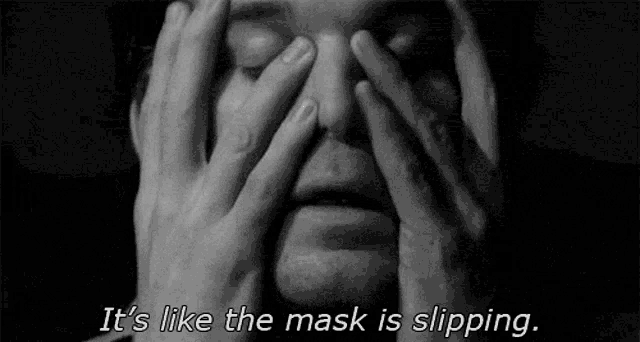The Mask and the Man: Stanley Ipkiss, the Chaos of Identity, and the Eternal Art of Becoming
On the Persona vs. the Id, the Hidden Gift of Trauma, and Comedy as Ritual
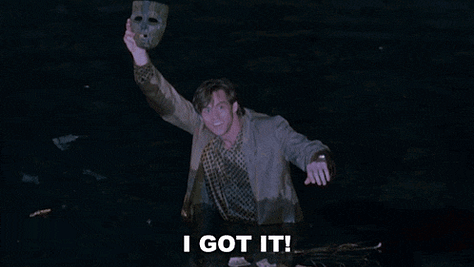
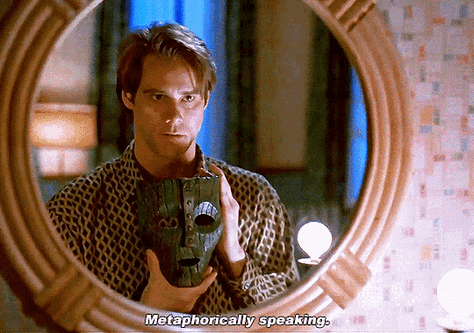
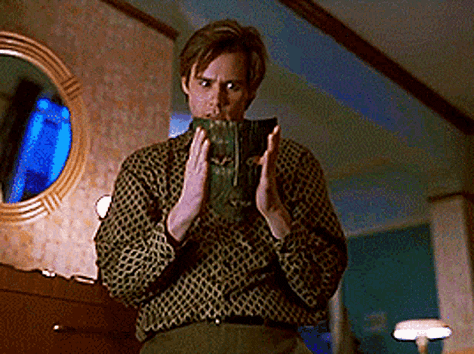
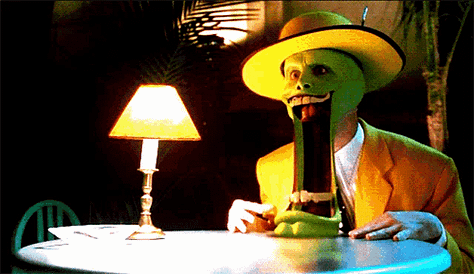

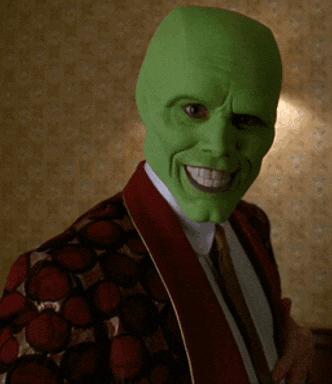

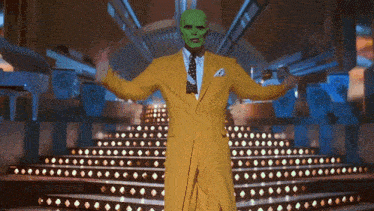
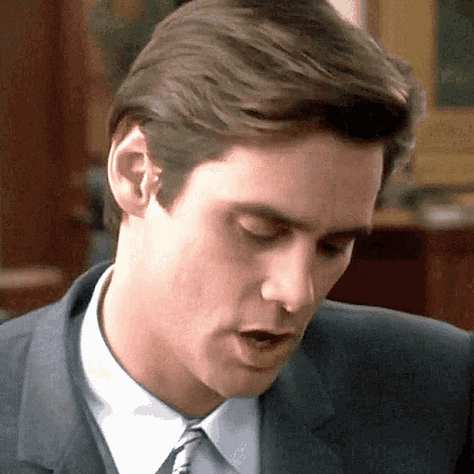
In The Mask (1994), Stanley Ipkiss is your basic doormat:
A soggy, spineless nobody who fades into the wallpaper and apologizes when someone else bumps into him.
He’s every guy who’s ever eaten a cold dinner at his desk, fantasizing about telling his boss to shove it but never doing a damn thing.
He’s what happens when the world decides you’re better off harmless and quiet, a cog that fits perfectly into the machine.
But then he finds the mask.
Or the mask finds him.
And suddenly, everything goes sideways.
This isn’t just a mask—it’s the id, raw and uncensored, stripped of every filter.
Loki’s trickster energy, compressed into something slick, rubbery, and ready to erupt.
Stanley doesn’t just wear the mask…
He lets it devour him.
Every clenched fist, every scream he swallowed to survive the day, every quiet humiliation—it all comes roaring back in technicolor violence.
The mask isn’t just freedom.
It’s annihilation.
And it forces Stanley to see the truth:
The line between chaos and control is a lie we tell ourselves to feel safe.
Everyone wears a mask.
The only question is how much of ourselves we’ve given up to keep it in place.
For most, it’s welded so tightly to their faces they’ve forgotten its even there, let alone what may be lurking underneath.
Stanley isn’t special in that regard. He’s just one of many fictional examples.
Look at all the great real world (is that what this place is?) public performers—Jim Carrey, Adam Sandler, Robin Williams, Eddie Murphy, Mike Myers.

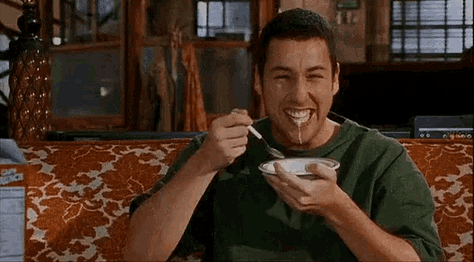
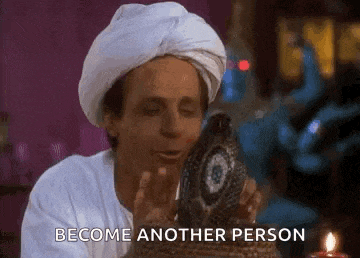



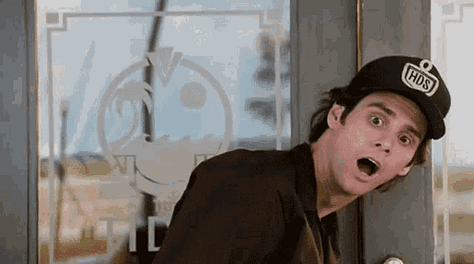

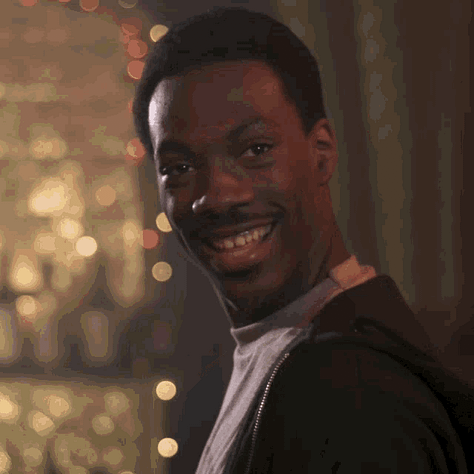
They don’t simply “act”.
They disassemble themselves.
They become their characters, tearing away at themselves piece by piece until there’s no clear boundary between the performance and the person.
Because a mask doesn’t protect you.
It reveals you.
It draws out the parts of yourself you’ve been too frightened to show and forces them into the light.
And the real trick of the mask is this: once you’ve put it on, it becomes part of you.
You may never fully remember what you were before…
And you might not even want to.
A mask doesn’t fix the damage.
It doesn’t erase the nights you couldn’t sleep, the mornings you didn’t want to wake up, or the memories that hit like a sledgehammer when you least expect it. What it does is take all that mess—all the anger, the shame, the fear—and twists it into something useful.
The mask doesn’t hide the hurt; it sharpens it.
Turns it into a blade.
When you put on the mask, you’re not running from the trauma.
You’re carrying it with you, wearing it like a second skin.
It’s the thing that says, “Yeah, I’ve been through hell. And now I know how to use it.”
The world doesn’t see the pain anymore.
They see what you’ve built out of it.
And that’s the gift: you’re still standing, but now you’ve got a weapon.
The truth is, the mask isn’t for the world—it’s for you.
It’s what lets you take all the ugly, broken pieces and make them yours.
Not a disguise, not a lie, but a way to own what they couldn’t take from you.
The trauma doesn’t go away, but behind the mask, it stops owning you.
You own it.
And that’s when you start winning.
At its core, The Mask (1994) is a slapstick comedy about an ordinary man who gains extraordinary powers through a cursed artifact imbued with the essence of Loki.
Yet to dismiss it as mere escapist entertainment would be to overlook its profound commentary on identity, societal expectation, and the masks we wear in our daily lives.
Stanley Ipkiss is not merely a hapless everyman thrust into chaos; he is an archetype—a reflection of humanity’s eternal struggle to reconcile its public persona with the shadow self lurking beneath.
From a psychological perspective, masks align with Carl Jung’s concept of the persona: the socially acceptable face we present to the world, distinct from the shadow—the hidden, often darker aspects of ourselves.
The Persona and the Shadow: Stanley’s polite, “nice guy” demeanor is his persona, a mask he wears to navigate societal expectations. The Loki mask, by contrast, unleashes his shadow: the chaotic, uninhibited id, brimming with desires and impulses long suppressed.
Possession and Spirits: The mask’s effects on Stanley echo the concept of possession. Alcohol, often referred to as “spirits,” functions similarly, lowering inhibitions and allowing repressed aspects of the self to surface. Stanley’s transformation into the Mask parallels the experience of intoxication, where the self becomes a vessel for external or internal forces.
The Mask and Addiction
As previously mentioned, the parallels between the mask and addiction are striking. Like alcohol, the mask offers a temporary escape from the constraints of reality, lowering inhibitions and amplifying desires. But this freedom comes at a cost: a loss of control and the risk of dependency.
The Allure of Intoxication
Stanley’s initial experiences with the mask mirror the euphoria of intoxication. He becomes the life of the party, invincible and uninhibited.
Morning-After Regret
Each morning after his escapades as the Mask, Stanley awakens disoriented, hungover, and horrified by his actions. This mirrors the regret that often follows moments of overindulgence.
The Danger of Dependency
Even after deciding he no longer needs the mask, Stanley feels its pull, much like an addict tempted by the allure of escape.
This dynamic ties to the concept of possession in esotericism. Just as alcohol opens individuals to external influences (hence the term “spirits”), the mask allows Loki’s chaotic energy to possess Stanley.
This transformation mirrors the alchemical process of calcination, where the ego is broken down to reveal the raw material beneath.
The green face of the mask itself is reminiscent of alchemical symbolism, where green often represents the prima materia, the unrefined starting material that must undergo transformation.
Stanley’s journey with the mask is a cautionary tale about the power of the shadow: while it can be liberating, it must ultimately be integrated rather than allowed to dominate.
The Fool’s Journey: Adam Sandler and Mike Myers
Jim Carrey’s Stanley Ipkiss shares thematic DNA with Adam Sandler and Mike Myers, whose comedic characters similarly explore transformation and masking:
Adam Sandler:
In Billy Madison and Happy Gilmore, Sandler’s characters embody the Fool archetype, navigating chaos to achieve growth.
In Punch-Drunk Love, Sandler explores the tension between vulnerability and rage, mirroring Stanley’s struggle to reconcile his shadow with his persona.
Mike Myers:
In Austin Powers, Myers portrays both hero and villain, reflecting the duality of the self.
In The Master of Disguise, Myers delves into the fluidity of identity, highlighting the risks and rewards of transformation.
The Mask as Metaphor for Social Programming
Masks are not just tools for disguise—they are also mechanisms for survival in complex social structures.
In The Mask, Stanley’s meek persona reflects the pressures of societal programming—the expectations of compliance, niceness, and conformity placed upon individuals, particularly those without overt power or status.
Goffman’s Theories of Social Interaction
Sociologist Erving Goffman’s seminal work The Presentation of Self in Everyday Life explores the idea that social life is inherently performative. Goffman likens human interaction to theater, where individuals wear masks to manage impressions and navigate expectations.
Front Stage and Back Stage: Stanley’s public persona is his “front stage,” a carefully managed image designed to appease the world. The Mask represents his “back stage,” the hidden, unfiltered self that emerges when societal constraints are removed.
Neuro-Linguistic Programming (NLP) and Behavioral Masks
NLP suggests that individuals unconsciously adopt “masks” to adapt to social and emotional contexts.
The mask Stanley wears metaphorically aligns with the NLP concept of “anchoring,” where certain behaviors or external stimuli trigger subconscious patterns.
The Loki mask amplifies Stanley’s suppressed desires and emotional triggers, revealing the power of certain external forces to override internal controls.
The Danger of the Trickster Archetype in Modern Times
The trickster is an archetype that embodies disruption, creativity, and boundary-breaking, but it also carries inherent dangers.
In Stanley’s case, the Mask amplifies the chaos of the trickster, forcing him to confront both the potential and peril of his unrestrained self.
The Corporate Trickster
In today’s world, the trickster archetype manifests in more insidious ways—through corporate branding, advertising, and media manipulation.
Consider the persona of the “clown” used in marketing (e.g., Ronald McDonald). These figures combine humor and absurdity to disarm and distract, yet they often mask deeper agendas.
Stanley’s transformation into a cartoonish, exaggerated version of himself reflects the commercialization of identity, where individuality becomes a performance designed for consumption.
The Trickster’s Modern Descendants
Films like Joker (2019) and Fight Club (1999) reimagine the trickster archetype as a figure of rebellion against societal constraints.
In Joker, Arthur Fleck’s transformation into the titular character mirrors Stanley’s journey: a descent into chaos fueled by repression, invisibility, and the hunger for recognition.
Fight Club explores the destructive side of unmasking, where the rejection of societal norms leads to nihilism rather than integration.
Conclusion: Beyond the Veil
The story of The Mask is not merely about a man gaining powers.
It’s a modern fable about the masks we all wear and the truths they conceal.
Through the lens of mythology, sociology, and esotericism, Stanley Ipkiss’s journey becomes a mirror for the human condition, reflecting our eternal dance between persona and shadow, freedom and control, chaos and order.
The Mask, like all great symbols, transcends its immediate narrative.
It is a ritual object, a trickster’s tool, a philosopher’s mirror.
It challenges us to confront our hidden selves and ask:
Who are we when the disguise comes off? And who do we become when it goes back on?
This is the eternal paradox of identity: to unmask is not to discard but to integrate, to carry the mask as both burden and gift.
In Stanley’s journey, we find a reflection of our own—the endless cycle of hiding, revealing, and transforming, forever striving to reconcile the selves we are with the selves we long to be.
Best comment on the above video:
@tommymarshall69
“In this interview, Smith does a remarkably good job of articulating something few people ever manage: he gets at the purpose at the crux of creative endeavor. His description of the “chaos” of a person’s inner life, the constant existential battle of being a human being—the daily tug-of-war of reason fore and impulse aft, the rational ego struggling to tame the animal id—and how the act of artistic creation (songwriting, for example) can render that chaos intelligible. Attempts to describe the infinitely unique maelstrom of consciousness quickly run into the severe limits of prosaic language. Subjectivity is, in this sense, subject to its own Heisenberg principle: you can let yourself feel it and therein necessarily lose the objective standpoint needed to deconstruct its concept and rebuild it in legible sentences, or you can switch on your analytical hat and in so doing exempt yourself from experiencing the very form of subjective experience you seek to analyse. The more you know about an electron’s position, the less you can know about its speed; the more you seek to analyse your emotions, the less you see them. Generally speaking, the more strife one encounters, the more chaotic one’s inner life may be, and the more important it may be for them to have a creative channel through which to communicate their experience and make themselves understood: “People seem so chaotic internally, but being filtered through some form like making a record sort-of filters it down so that it can be understood”. And he’s absolutely right. He’s absolutely right when he says “it’s hard to represent chaos or the absence of something”, and that “it’s much easier to represent the presence of something, or a situation”. The creative process is a middle way between, on the one hand, the analysis (breaking down) and re-synthesis (putting back together) of perception in language, and, on the other hand, direct experience. It is a middle way which straddles description and experience—a mimetic practice that is neither a description of a thing nor the thing itself but rather something in between, something which is it’s subject but at the same time has its own life, something that is legible but at the same time bends to no external rubrics. I’ve read a fair bit on this stuff, and few people are able to articulate this dimension of creative practice as lucidly as Smith did in this interview. You can feel his lyrical talent in the way he reaches for his words in constructing his descriptions—punctuations of “like” and “sort-of” are not halter-marks; they create space, and give subtle signals to his interlocutor as to the approximate degree of conviction in each of his statements, constructing and flexible interpretive space not dissimilar to that he is describing when he talks about songwriting. Even in an interview, even in his prosaic speech, Smith speaks in kind and thoughtful lyrics. Also, Kierkegaard is EVERYWHERE in Smith’s work. Somebody must have written on this? Elliott Smith, God rest him, was a brilliant artist. His lyricism, and above all his kindness, remind me of Keats, who was also a notoriously kind friend, and who’s poetry fortified our appreciation for the strength of the bond between love and beauty. My one hope is that our civilisation can grow towards elevating souls like his, souls that, presently, are increasingly bullied and scorned and exploited in the dominant culture of ruthless individualism among the powerful. If you know someone like Elliott Smith in your life (and I’d wager there are more of them among us than we tend to think), please be kind to them, reach out to them, support them, and love them. They’ll return the favour 10 times over.”




